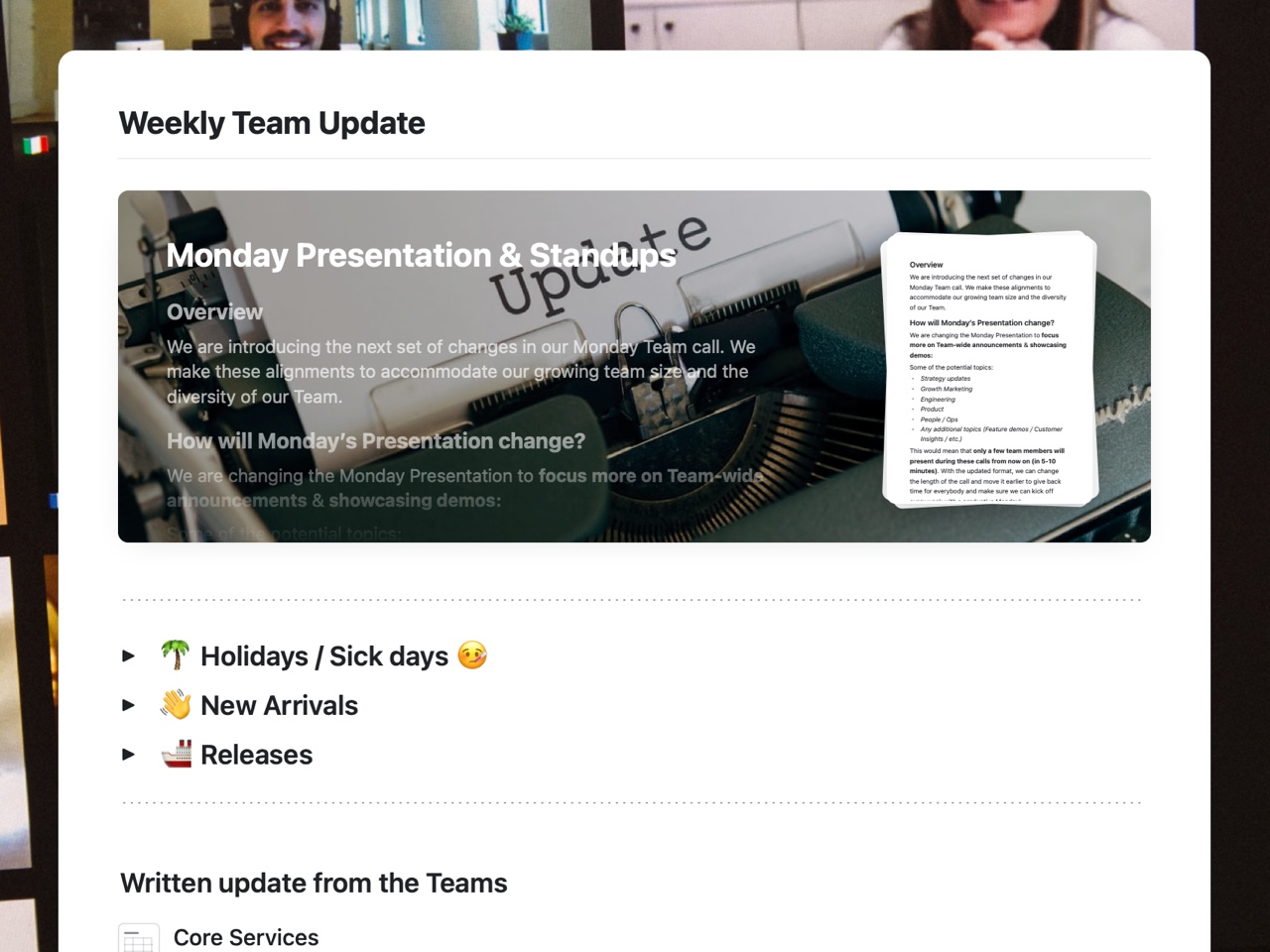The Weekly Team Update: How to Write One that's Actually Useful
The weekly team update is a staple of many organizations. It's a time to come together and share what everyone has been working on, what's coming up, and anything else that's important.
For some, the weekly team update is a dreaded task. It's yet another meeting to add to an already packed schedule, and it can often feel like a waste of time. But it doesn't have to be that way!
A well-written weekly team update can be a valuable tool for keeping everyone on the same page and ensuring that everyone is aware of what's going on. Here are a few tips for writing a great weekly team update:
Keep it concise.
The weekly team update doesn't need to be a novel. In fact, it's better if it's not. Keep your update to a few paragraphs at most.
Stick to the important stuff.
Your team update should cover the most important things that happened in the past week and what's coming up in the next week. That's it!
Be clear and concise.
Use clear and concise language in your team update. Avoid jargon and technical terms that not everyone will understand.
Use bullet points.
Bullet points are your friend when it comes to team updates. They make your update easy to scan and understand.
Use headers.
Headers help to break up your team update and make it easier to read. They also make it easier to reference specific parts of your update later on.
Proofread.
Before you send out your team update, take a few minutes to proofread it. Check for typos, grammatical errors, and clarity.
Send it out on time.
Your team update should be sent out in a timely manner. Sending it out too early means people will forget about it, and sending it out too late means people will already be aware of what's going on.
The weekly team update is a valuable tool for keeping everyone on the same page. By following these tips, you can write a team update that's actually useful.

